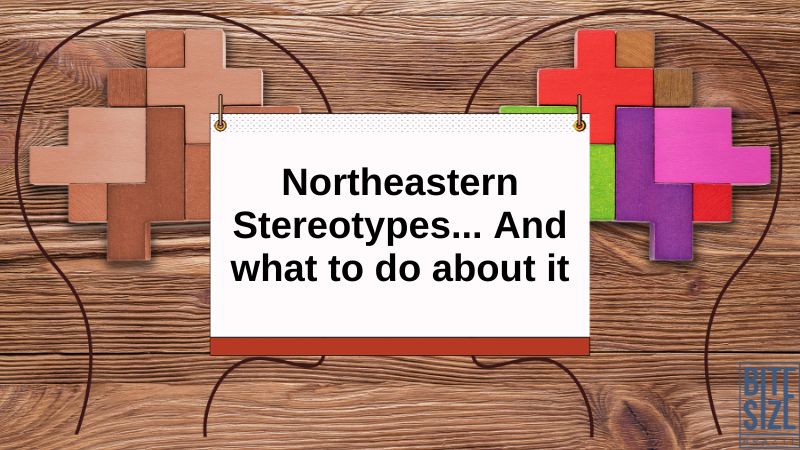Northeast Brazil is a region that is often misunderstood and misrepresented.
Unfortunately, this has resulted in a number of stereotypes that are perpetuated by the media, both in Brazil and abroad.
If I talk with people from São Paulo, they think I am an educated. If I talk with people from other countries, they think my Portuguese accent is funny, whatever it means.
Because of those stereotypes, I will explore some of the common stereotypes associated with Northeast Brazil and how they are being challenged.
A Bit about Our Region
all talk about our region, my region, etc. because I am from northeastern Brazil. And I still live here by the way.
The Northeast region of Brazil comprises nine states and is home to over 56 million people. It is a region rich in history and culture, with a diverse population that includes indigenous people, Afro-Brazilians, and immigrants from around the world.
Despite this diversity, however, the region is often reduced to a set of simplistic stereotypes — especially that we have a cute accent — that do not accurately reflect the complexity of the region and its people.
Geocurrents, a Handy Tool
Geocurrents is a website that has a collection of maps that explore regional stereotypes in Brazil. These maps provide insight into regional rivalries and perceptions in Brazil. To me, they are incredibly accurate. If you look at the maps that represent the views of different regions, you’ll have the main gist of our conversation here.
Let's take a closer look at some of these maps and their revelations.
Stereotypes Revealed in the Maps
The maps on the website reveal a number of stereotypes associated with the Northeast region of Brazil.
One map, for example, shows the Northeast as a region of "bandits and thieves." Another map shows the Northeast as being "uncivilized" and "backward."
And because people from other regions tend to see the Northeast as a single thing, we are labeled as one state depending on where the observers from.
These stereotypes are not only inaccurate but also harmful, as they perpetuate negative perceptions of the region and its people.
Debunking Misconceptions and Stereotypes about Northeast Brazil
Despite the diversity and richness of Northeast Brazil, the region is often subject to negative stereotypes and misconceptions.
In this section, we will examine some of the most common misconceptions and stereotypes about Northeast Brazil and why they are inaccurate.
Misconception: Northeast Brazil is an Underdeveloped and Poor Region
One of the most common misconceptions about Northeast Brazil is that it is an underdeveloped and poor region.
Is it true?
Partly.
It is true that the Northeast region has historically faced economic challenges. Once Nordeste was a powerhouse, but multiple factors including the decline of the sugar trade, poverty, social disadvantages, harsh terrain, and lack of investment caused the downturn.
Stereotype: Northeast Brazil is a Hot and Arid Region
Another stereotype about Northeast Brazil is that it is a hot and arid region.
It is hot and arid. I will not lie to you. But there are forests, hills, and above all else, the beaches that made our region world-famous.
Furthermore, the region's climate and geography have contributed to a rich and diverse cuisine that is celebrated throughout Brazil.
Misconception: Northeast Brazil is Unsafe and Dangerous
Northeast Brazil is often portrayed as a dangerous and unsafe region, particularly in the media.
As a Brazilian living in the Northeast, I don’t think we are the safest region in the country. But we are not as unsafe as the media portrays it. By the way, I already talked about the perception of violence in Brazil and who it is violent for. It’s much more complex than just labeling the region unsafe.
Stereotype: Northeast Brazilians are Lazy and Uneducated
Finally, one of the most harmful stereotypes about Northeast Brazil is that its people are lazy and uneducated.
When I was first learning German, I remember I came across a group online from São Paulo. I made good friends there, but a few people were if not outright rude, at least ignorant.
One of them asked me why was learning German. Their idea was that I would have no use for the language where I lived. The implication was that no Germans would ever step in my city.
Which was a mistake, because one of my mother’s friends came from Germany with a German lady. And I was her interpreter.
Anyhow.
This stereotype is not only inaccurate but also disrespectful to the hardworking and talented people of the region. The Northeast region is home to many renowned universities and research institutions (as shown in this ranking), as well as talented artists, musicians, and athletes.
A Quick Detour: Our Artists
Many of the most important Brazilian artist were born in the Northeast.
Take Rachel de Queiroz, for example. A literary monster from Fortaleza, she penned "O Quinze" at the mere age of 20, a novel that vividly captures the struggles of the great drought in the Northeast. Her stories and chronicles earned her a seat as the first woman in the Brazilian Academy of Letters—a true trailblazer for her time.
Then there's Jorge Amado, whose words paint the raw and colorful lives of Salvador's street children in "Captains of the Sands." His narratives, steeped in Afro-Brazilian culture, have etched a permanent mark on Brazilian literature.
Stepping into the rhythm of Brazil's music, we find the legendary Luiz Gonzaga from Recife, whose melodies brought the Northeast's forró to the whole country, making every Festa Junina dance to his tunes. And we can’t forget Raul Seixas, the 'Father of Brazilian Rock'.
Challenging Regional Stereotypes
Despite their negative impact, regional stereotypes in Brazil are not inevitable.
There are many examples of people and organizations working to challenge these stereotypes and promote a more accurate and nuanced understanding of regional identity.
For example, the film Lisbela e o Prisioneiro challenges stereotypes about Northeast Brazil, while scholars such as Durval Muniz de Albuquerque Jr. with his Invention of the Brazilian Northeast [affiliate link] have written extensively about the creation of regional identities in Brazil.
Overall, regional stereotypes in Brazil are a complex and multifaceted issue.
There are bad, and everyone knows it. But they were created. It’s not something that has always been there. And it’s something that doesn’t need to continue there.
And just by reading this article and opening up your mind to the different ways of understanding Brazil and its culture, you fight those stereotypes.
Thank you for being an ally 🙂
Check Out Our Other Great Content
If you enjoyed this article, you'll probably love to see the best places to visit in Northeastern Brazil. Click here to check it out.
And share with us your experience with the Brazilian Northeast... and if there are any stereotypes about where you are from!

